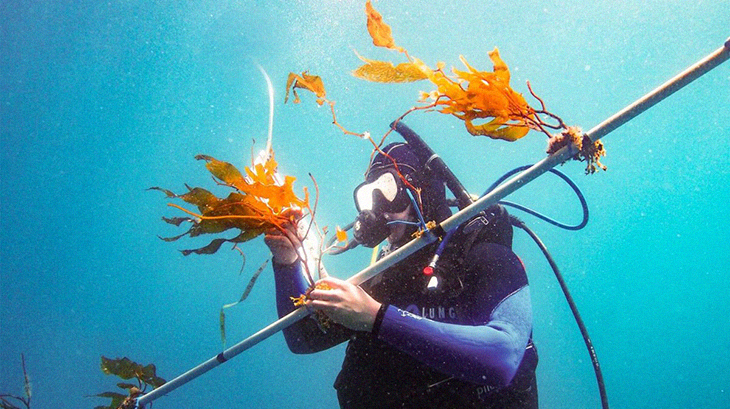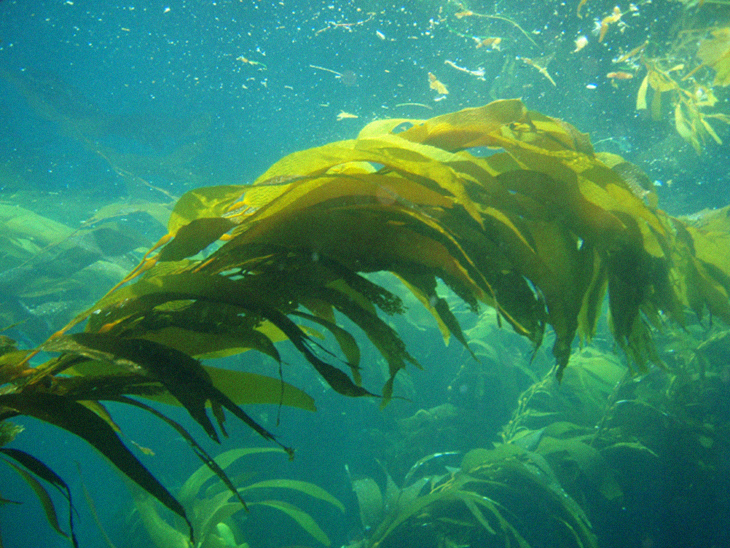
When it comes to world energy, the earth is losing its supply. Man has managed to destroy the natural resources throughout the years, and because of this, we’re quickly running out of supply for biofuels. It’s a difficult reality we all need to face.
Thankfully, there are resourceful scientists out there who are constantly looking for solutions to this weary problem. They’re relied heavily on technology for solution and they may have finally found an answer to our dilemma.
The future may now rely heavily on kelp. This is the answer to the decades-old struggle to slow down, or altogether halt, the runaway freight train of man’s catastrophic impact on Mother Earth. The ocean may play a big role in this, and scientists are now looking into what they can do should they take this new avenue.
The experts behind the biofuel solution have teamed up with others in the similar industry. Scientists from the University of Southern California have discovered what they call the ‘kelp elevator’ technique. This method allows them to produce a decent amount of seaweed that has the capability of providing a high-yield biofuel. If this pushes through, we may finally be able to wean ourselves out of continually using fossil fuels.
When it comes to land-based biofuels, there are several sources available out there. All of them are capable of powering the different modes of transportation. Some cars, planes, and boats are actually now using biofuels sourced from mass-produced farm crops such as corn, soybeans, and switchgrass. However, while these do sound ideal, these options have proven to be quite problematic. Some of the impediments are limited food-providing land space, the use of massive amounts of water, pollution created by pesticides and fertilizers, and encroaching on rare biodiverse habitats.
Hence, the best answer would be the giant marine algae such as seaweed. Man will be able to avoid the usual obstacles they face because the biology of seaweed is also more compatible as a biofuel. For instance, giant kelp (macrocystis pyrifera) can grow at a rate of up to 35 cm (or 14 inches) a day. This is actually quite impressive and more ideal. The kelp constantly forms new fronds, which allows people to harvest of the mature fronds in just a short amount of time. The giant fronds can grow to 30 meters (98 feet) in length. If not harvested, these would just die. Its death will not impact the new kelp’s growth whatsoever.

Fact is kelp is a protist. It isn’t a plant, as what most people assume. Its molecular composition doesn’t contain the sturdy plant lignin that actually muddles the process of converting crops into fuel. More importantly, kelp also captures carbon dioxide. Having this in the ecosystem means that there will also be an increase in the pH levels and oxygen supply. This helps assuage the effects of ocean acidification.
While kelp does seem to be an ideal answer, there are a few questions regarding its production. Can we farm enough seaweed for fuel in an environmentally friendly way? There was no direct answer to this until recently. Experts behind the projects may have discovered a new way to effectively mass produce kelp: they say that they can do this by raising and lowering the kelp’s depth in the water. Diane Young, scientist for University of Southern California says, “We found that depth-cycled kelp grew much faster than the control group of kelp, producing four times the biomass production.” She believes that by continually and diligently cycling the depth of the kelp across one day, she and her team discovered that the new method was actually taking nutrients from deeper in the water.
The constant cycling allows nutrients to spread, especially those that were missing closer to the surface at night. The cycling also fuels its extra growth while allowing the environment to still receiving enough access to sunlight in shallower depths while the sun is up.
Young and her team also found the kelp exposed to greater depths went through physiological changes that allowed these to be better equipped when dealing with increased pressure. The parts called pneumatocysts – the air-filled structures that help kelp fronds float closer to the source of light – became thicker and were filled with more fluid.

Hence, the researchers built a kelp elevator. The project was based off the coast of California. The elevator created was made out of fiberglass and stainless steel. These were equipped with horizontal beams where they could “plant” the young kelp on. This experimental contraption was cycled through the water column with the use of an automated, solar-powered winch.
Brian Wilcox, team engineer of Marine BioEnergy, explains, “The good news is the farm system can be assembled from off-the-shelf products without new technology. Once implemented, depth-cycling farms could lead to a new way to produce affordable, carbon-neutral fuel year-round.”
This new finding has the ability to open up to farming huge regions of nutrient-poor ocean. The elevator will aid in kelp growth that, in turn, protects the vital carbon sinks of naturally occurring kelp forests. The brown algae that was once overlooked by man could now be the most useful resource. The team prodded others for further investigation. There is much work to be done, and if everything falls into place according to plan, this would be the answer to the ever increasing costs and energy requirements involved in growing, transporting, and converting kelp biomass into liquid fuels.
There are also other scientists, such as Woods Hole Oceanographic Institution biologist Scott Lindell, working on selectively breeding stronger and bigger kelp species, as these would even be more ideal. Lindell says, “In a hotter and drier world of the future, it will be hard to find a better resource for biofuels than farmed seaweeds that require no arable land, no fresh water, and no fossil-fuel-derived fertilizer in contrast to modern land crops.”
This study has been published in Renewable and Sustainable Energy Reviews.
What are your thoughts? Please comment below and share this news!
True Activist / Report a typo


